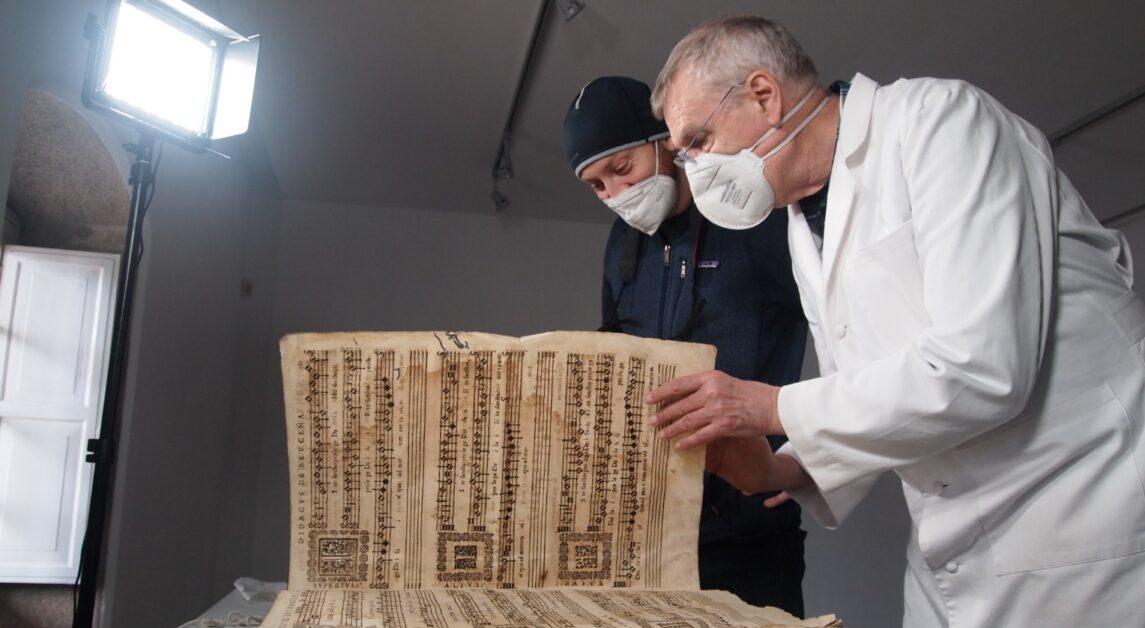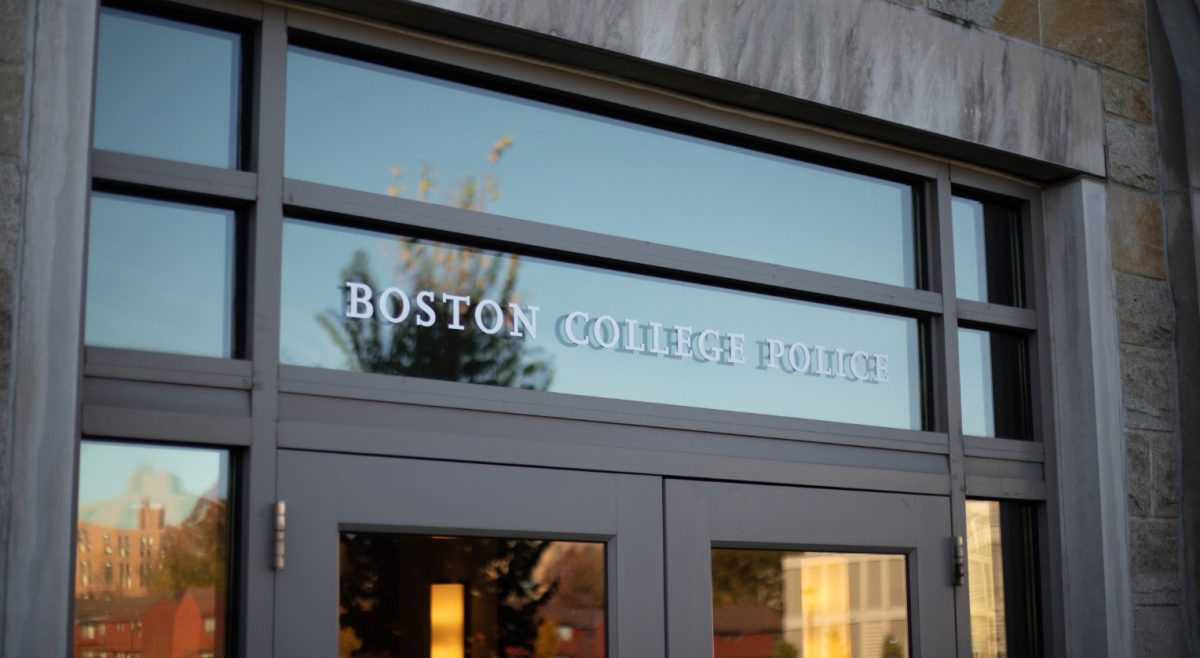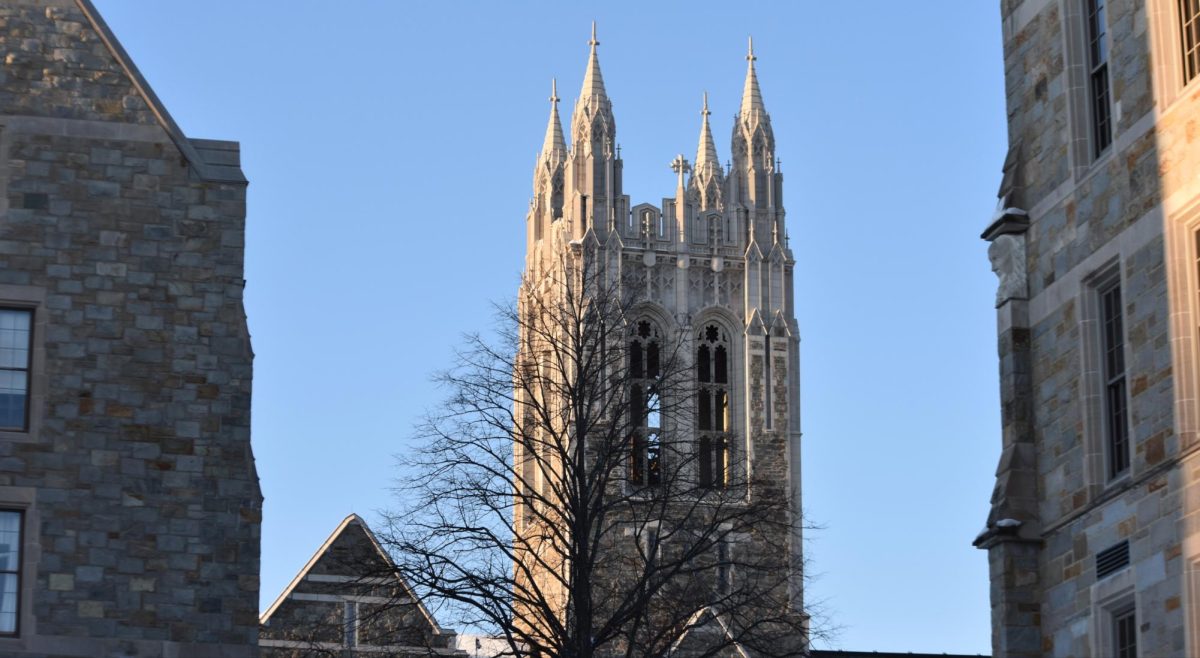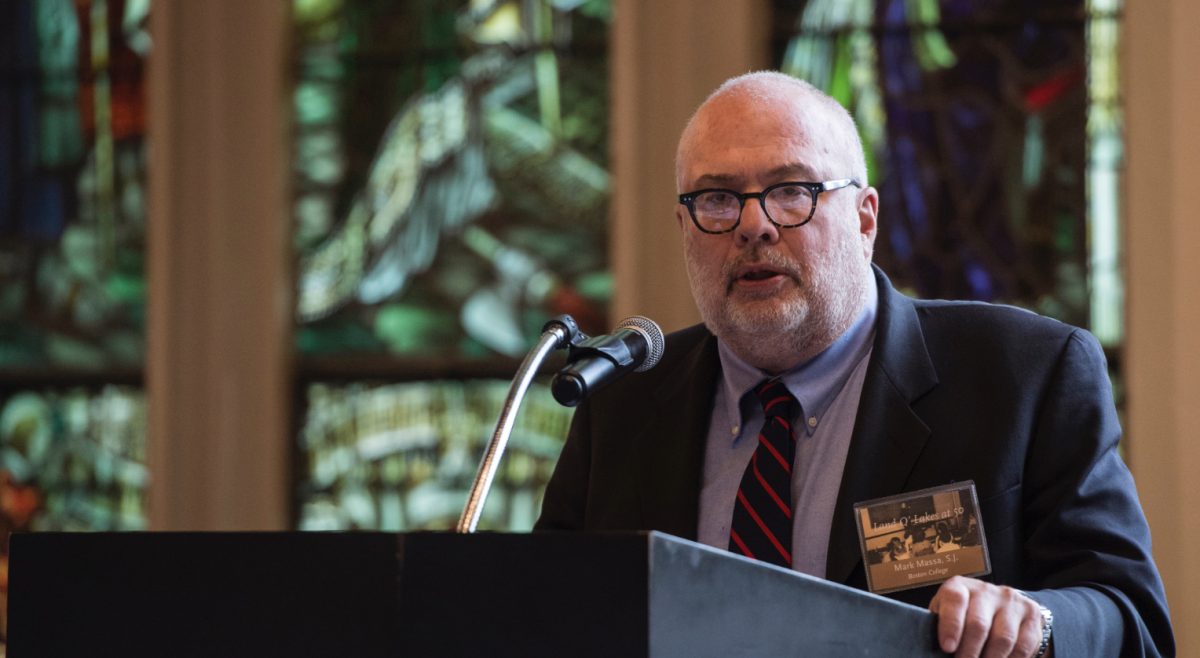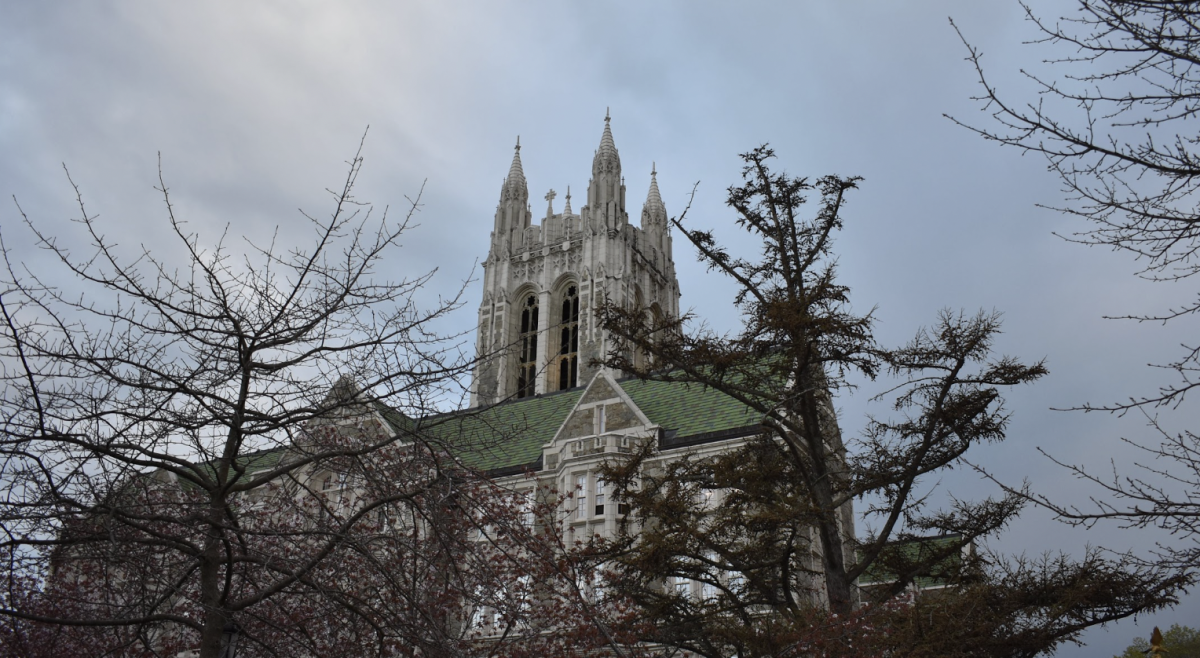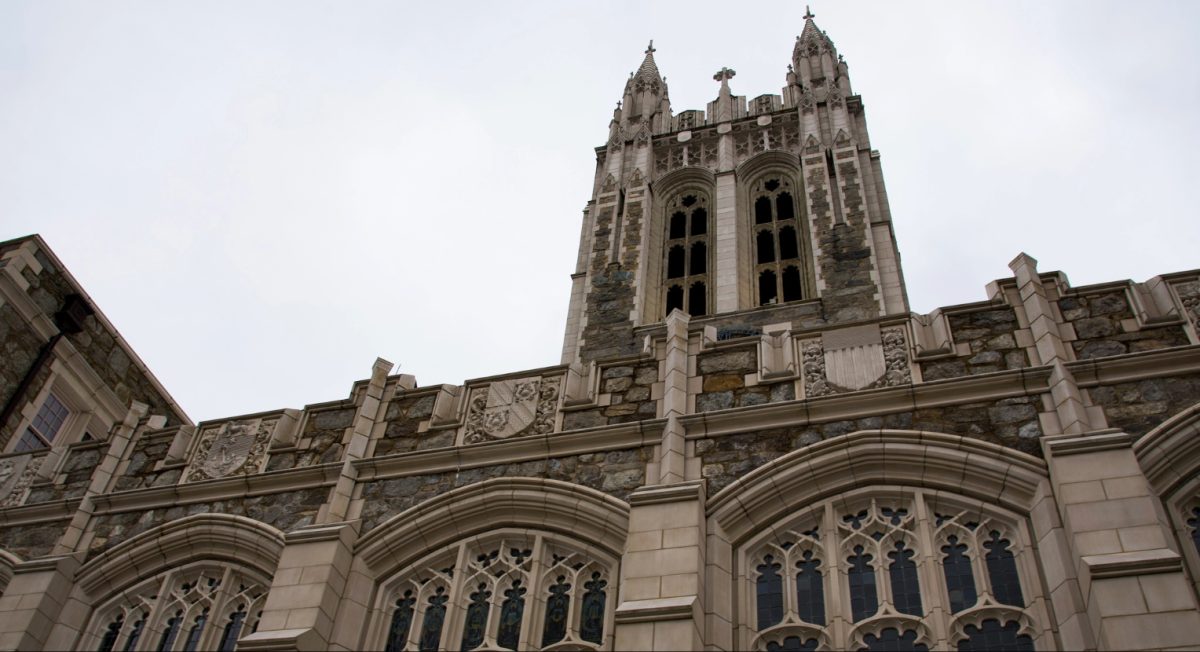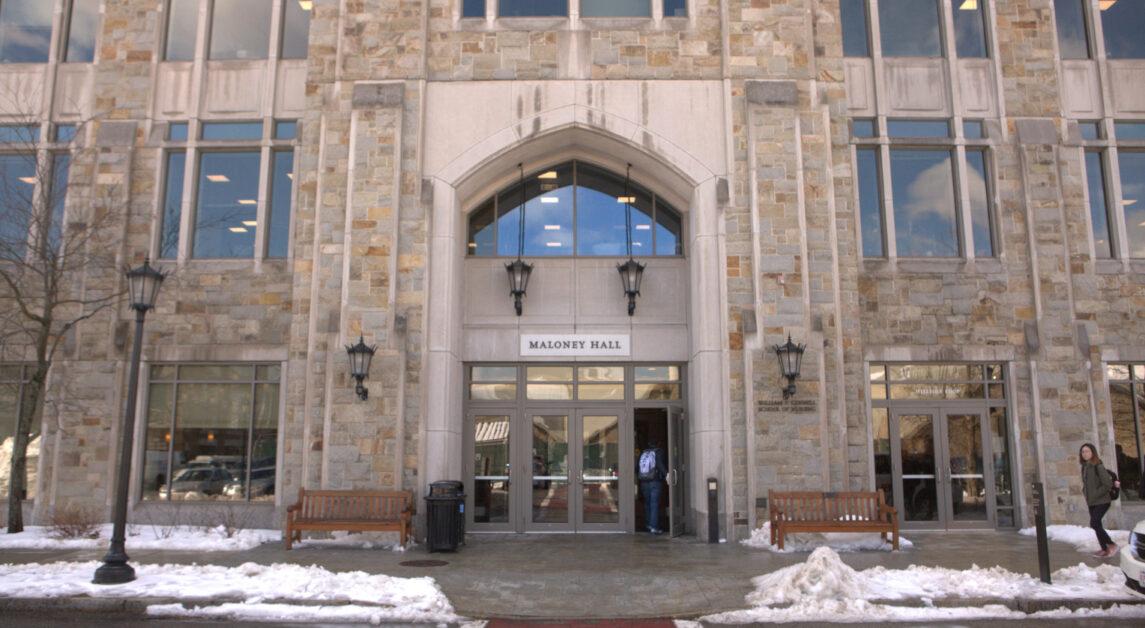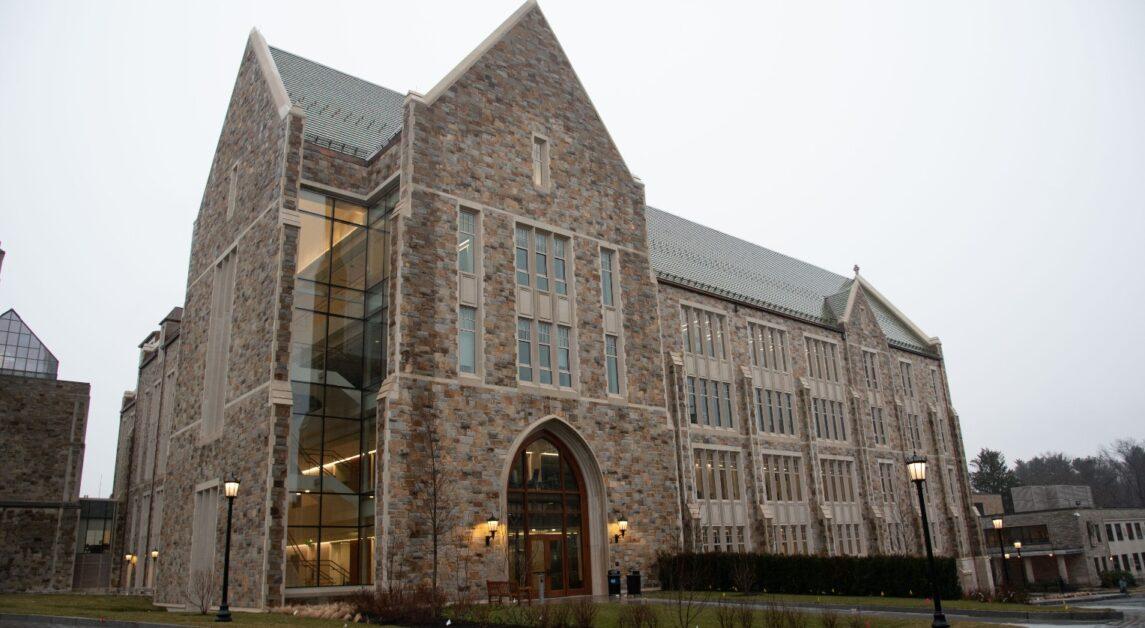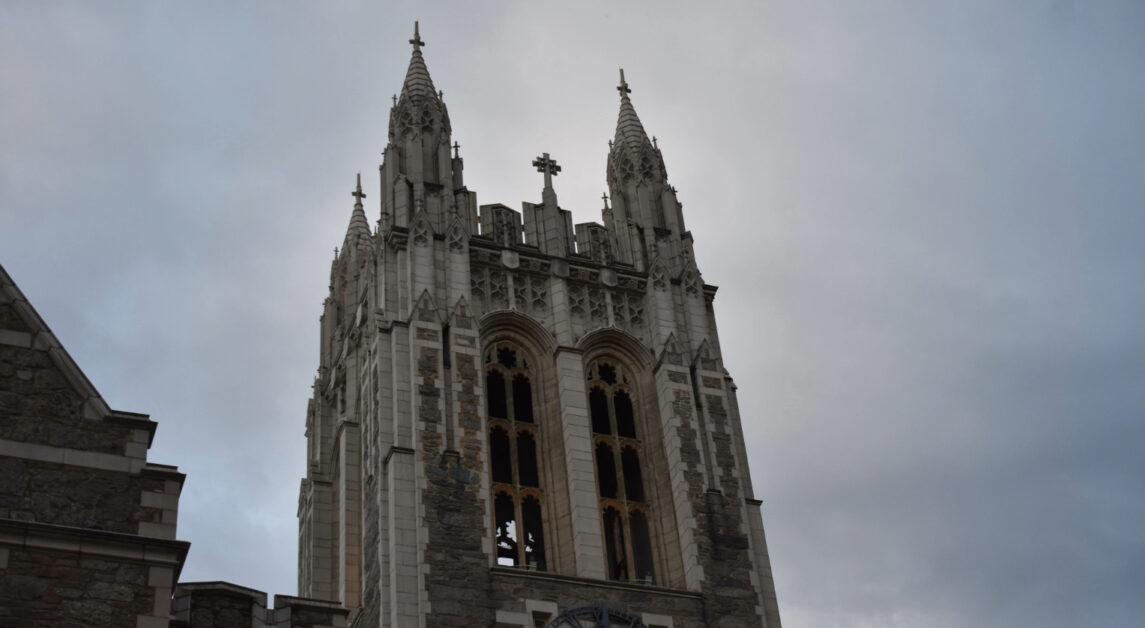“I started to discover that she not only had a name, but she was the most prolific printer of sacred music in all of early modern Spain,” said Noone, the leader of this project and chair of the music department at BC.
Noone said the book, which was written by Susana Muñoz, has deep roots in the Jesuit tradition, connecting it to BC’s own Jesuit heritage.
“[It] is the 400th anniversary of the canonization of St. Ignatius of Loyola and Francis Xavier [last month],” said Noone. “There [was] a special ceremony in March, 400 [years] ago in Rome, where St. Ignatius and St. Francis Xavier were canonized.”
Noone said he hoped to commemorate this anniversary, so he traveled to Burns Library to find a book about the original ceremony that took place in 1610 for inspiration.
“I went to the Burns Library, and I dug up a book from 1610 that was about all of the festivities that happened in a Jesuit college—the University of Salamanca—in Spain in 1610,” Noone said.
As he was looking at this book, Noone said he saw something that caught his eye.
“The thing that drew my attention was the printer,” he said. “There is a 260-page description of all the performances and festivities that happened right back in 1610, but on the title page it says, ‘by the widow of … ’ and then a man’s name.”
The book only acknowledged Muñoz’s husband, dismissing Muñoz as a respectable printer because of her gender, which Noone said is indicative of historical female oppression.
“In the 17th century, women were [only] the mother of someone, the daughter of someone, or the widow of someone,” Noone said.
Noone thus wanted to learn more about this woman, he said, starting with her name.
“So I traveled to Salamanca about two years ago,” Noone said. “I discovered the woman’s name. Her name is Susana Muñoz.”
Noone soon discovered that Muñoz was the most prolific printer of sacred music in early Spain. After finding a contract between her and a composer, Diego de Bruceña, Noone learned there were copies of Muñoz’s work out there somewhere to be found, he said.
“It [said] exactly how many days the printing contract was to take place, who was going to be responsible for funding the paper, ink, and the proofreading,” Noone said.
But even with proof that this musical book from 400 years ago existed, Noone said he had no specific evidence about its whereabouts, leading to his trip.
Noone said he traveled to Portugal to explore various archives, finally discovering that the book might be located in a small town called Miranda do Douro.
Matthew Naglak, a digital scholarship librarian at BC and a member of Noone’s team, said the BC researchers flew into Madrid before traveling to the town, which is located just past Portugal’s border.
“We spent most of our time in the town’s museum, which housed the choir book and a bunch of other artifacts,” Naglak said.
After locating the book, Noone said his team took photos that will later be shared with the BC community. But before the photos are released, Noone said the team will finish transcribing the book.
“We will have BC students involved in basically every stage of the project,” said Noone. “We hope to get really good [and] available transcriptions up … for everybody, as well as performances up there.”
The team hopes to include a 2D, top-down imaging model of the book on the website so people can see and possibly perform the songs in the book, according to Naglak.
“We actually have a relatively new method of high [resolution] digitization that is based on the 3D modeling of individual pages of the choir book and then taking that actual 3D surface and exporting a 2D top-down image,” Naglak said.
Naglak said that the team’s photography method avoids any possible damage to the book.
“The book itself is very fragile and unable to be transported to BC and also kind of moldy and disintegrating,” Naglak said. “We wanted to really try to go for a non-invasive way of digitizing the text because it couldn’t go into a standard scanner for [fear of] it being injured further.”
Although the process of digitizing the book is slow-going, Naglak said he enjoyed traveling to a new place and using technology to bridge together different areas of the world.
“My background is actually in archeology, and so I love traveling and seeing old things from any period,” Naglak said.
Noone said this book is incredibly important for the BC community, not only because it is ingrained in the Jesuit tradition, but also because of the heightened importance of sharing music after challenges posed by the COVID-19 pandemic.
“We have had two years without singing and two years without wind instruments. We have had two years without performances,” he said. “It seems to me that this comes at the right time when we need it [the] most.”
Featured Image Courtesy of Michael Noone / For The Heights

